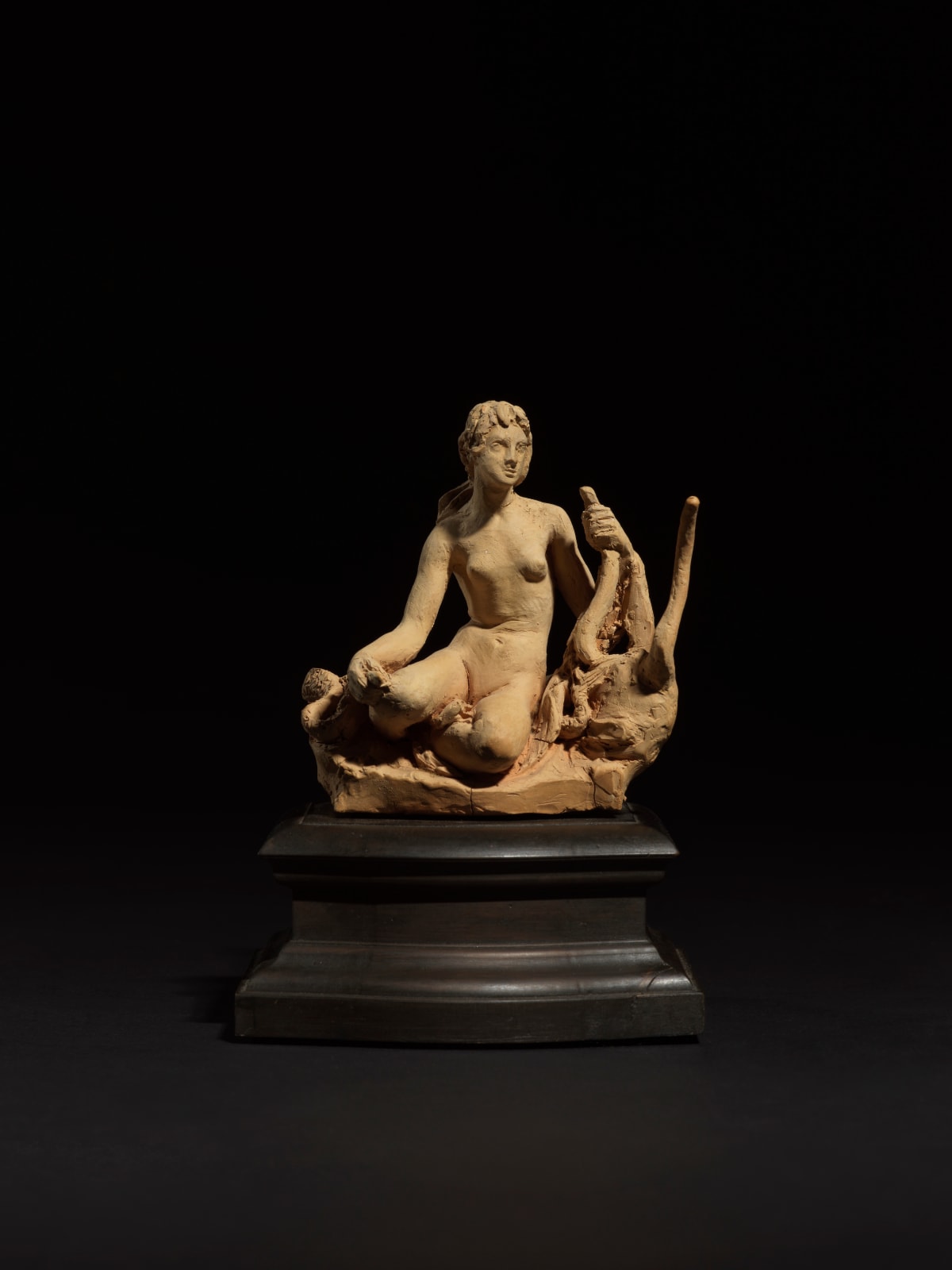-
Artworks





VINCENZO GEMITO
The Siren Fountain (La Fontana della Sirena), 1920Terracottah. 9.9 cm
3 7/8 in.
Overall h. 15.9 cm
6 1/4 in.Further images
Recently brought back to the attention of the international public thanks to the important retrospective at the Petit Palais, Paris, and the Museum di Capodimonte, Naples (Gemito – Le sculpteur...Recently brought back to the attention of the international public thanks to the important retrospective at the Petit Palais, Paris, and the Museum di Capodimonte, Naples (Gemito – Le sculpteur de l’âme napolitaine, 2019- 2020), Vincenzo Gemito is rightly considered by critics as one of the most original Italian sculptors active between the late nineteenth and early twentieth centuries.
Gemito’s bibliography has mainly focused on his early production: that is, on the period between his training at the Accademia di Belle Arti in Naples, and the mental crisis that seized him in 1887, forcing him to inactivity for more than twenty years. His twentieth-century production, on the other hand, is still substantially unexplored and sometimes superficially labelled as a phase of classicist revival.
Despite the obsession with antiquity, Gemito’s work from the first two decades of the twentieth century is, on the contrary, marked by moments of unexpected creativity. This is demonstrated by the small terracotta entitled by the artist the Siren Fountain (La fontana della Sirena), signed and dated 1920, which is notable for the freshness of the modelling, left in an almost sketchy state, and for the attention to finely tooled details. The sensuality of the terracotta, even more sophisticated due to its diminutive format, is a distinctive feature of Gemito’s sculpture, which culminates in the creation of the small precious sculptures on which he worked between the 1910s and 1920s.
Although a recent rediscovery, the Siren Fountain was published for the first time by Alfredo Schettini in the Gemito monograph published in Milan in 1944 (op. cit.) – although with the incorrect date of 1918 – which was reiterated in more recent publications. Schettini gave great relevance to the small sculpture, reproducing it on a full page, and gave a rare testimony of the genesis of the artwork: the artist was in the park of Villa Lucia, then frequented by leading Neapolitan artists and intellectuals, when he was inspired by the vision of a young woman in which he seemed to recognise the siren Parthenope. He asked her to pose nude for him, but the girl, ‘a demure virgin’, refused the proposal, so Gemito modelled the sculpture in his studio using only his imagination.
The enthusiasm shown by the sculptor in the realisation of this small masterpiece is also documented by the Neapolitan painter Carlo Siviero, a friend of the artist who, in his 1953 monograph (op. cit., p. 91), refers to letters sent to him by Gemito in which he told him about his newfound inspiration and his ‘intent on modelling a little mermaid’. Further proof of the importance the artist attributed to the Siren Fountain, it is worth mentioning the unlocated Self-portrait from 1920 in which, behind the bearded sculptor, one can see the very same terracotta, awaiting its final touches.
In this work Gemito approaches for the last time, as far as we know, the subject of the Siren Parthenope whose death – according to some versions of the legend – resulted in the founding of Naples. In some drawings made between 1911 and 1912, the artist already portrayed his daughter Giuseppina as a siren, naked and with the attribute of the lyre. The theme of the siren seems to have been a recurring fascination for Gemito. Indeed, he would write directly to King Vittorio Emanuele III: ‘It was the Siren who told me to stay in Rome, to work here on the new works … And I, both in my sleep and in my wake, listen to the Siren. I obey, of course, only the Siren who speaks to me from the bottom of the sea or the bottom of my soul, not those who call me from cars or steamships. I was not born a traveller and my only journey is my dream as an artist’ (Afeltra, loc. cit.).
The Siren Fountain probably entered the collections of the Emilian painter Riccardo Fainardi in October 1923, when Gemito gave him a declaration of authenticity in which he stated: ‘The little Siren in terracotta just 9 or 10 centimetres tall is uniquely original, and has never been reproduced in any material, so that this one you possess there are no others. For memory / Naples 10 October 1923 / Vincenzo Gemito’ (fig. 3). Fainardi owned a villa in Capri, in the bay of Marina Piccola, where he went annually looking for pictorial motifs. During his vacation periods between Naples and Capri he met the elderly Gemito, from whom he probably bought the work, which he then kept in his villa in Gaiano, protecting it in a glass bell as the most precious of treasures.
Manuel Carrera
February 2020Provenance
Acquired directly from the artist in 1923 by Riccardo Fainardi, Gaiano.
Thence by descent.
Private collection, Italy.
Literature
C. Afeltra, Vincenzo Gemito, La Lettura, fasc. 4, 1929, p. 268.
A. Schettini, Gemito, Milan, 1944, p. 39, pl. 51.
F. Bellonzi, Appunti sull’arte di Vincenzo Gemito, Rome, 1952, p. 29.
C. Siviero, Gemito, Naples, 1953, pp. 90-91.
L. Gambara, Le ville parmensi, Parma,1966, p. 327.
S. Susinno, ed., Da Canova a De Carolis: acquisizioni e restauri delle collezioni dell’Ottocento della Galleria nazionale
d'arte moderna, Rome, 1978, p. 66.
2of 2









